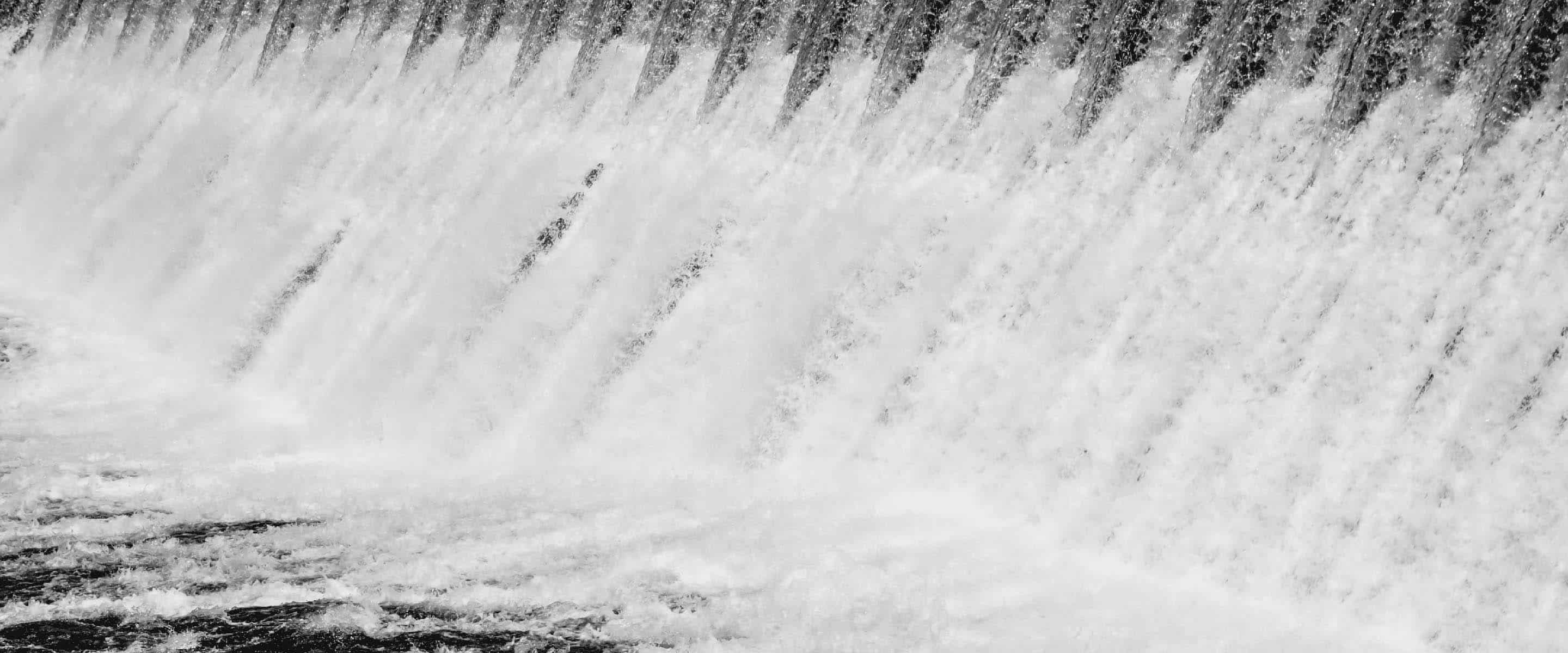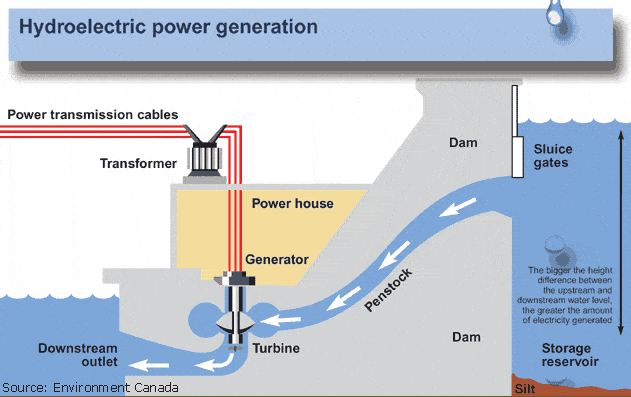A Primer on Hydroelectric Power


🌍 Carbon markets can feel overwhelming—fragmented data, limited transparency, and conflicting advice make it hard to know where to start. In this webinar, our experts give a clear, practical introduction to the VCM.

Certified Offset Portfolios
Buying high-quality carbon offsets has never been easier. Explore CBCO Portfolio 22-1 and get instant access to fully vetted carbon offsets.
The pros and cons of hydroelectric power, and whether it’s the best path towards greener energy sources.
Hydropower is one of the oldest sources for producing electricity and mechanical energy. In the form of water wheels, ancient civilizations designed these mechanisms with paddles that tapped into the energy of flowing or falling water. By the mid to late 1800s, the “modern” hydropower mechanism was developed to produce electricity. In 1882, these hydropower components were installed in Appleton, Wisconsin along the Fox River as the first hydroelectric power plant to produce electricity. Since then, about 1,450 conventional and 40 pumped-storage hydropower facilities have been developed in the U.S. today. Also, with its designation as a source of clean energy, hydropower is a key part of climate mitigation efforts.
Hydropower, Carbon Credits, and Carbon Offsets
Hydroelectric power plants are a form of renewable energy project which can generate carbon credits for offsetting carbon emissions. Multiple carbon registries offer hydro projects as an option for entities to develop and generate carbon credits. Under the Clean Development Mechanism (CDM) within the United Nations Convention on Climate Change’s Kyoto Protocol framework, more than 2,000 hydropower facilities are CDM-registered projects, and over 300 hydropower projects are registered with the Verra Registry.
Companies, private individuals, governments, and other entities who are a part of voluntary or involuntary cap-and-trade systems may choose to buy carbon credits through such exchanges. Purchasing carbon credits for a hydropower project is an attractive option for companies for several main reasons. First, the hydropower project could be located close to their business or their value chain. Second, the company aims to support the co-benefits of the hydropower project, including providing renewable energy to nearby communities as well as jobs. Additionally, investing in hydropower or buying electricity from the facility helps companies offset their own carbon footprints. Hydropower is a reliable, cost-effective, and low-carbon source of renewable energy.
How a Hydroelectric Power Plant Works
Hydroelectric power plants generate electricity from moving water, so they are usually located near or next to water bodies. These renewable energy facilities generate electricity by using the elevation difference created by a dam or structure—known as the head—whereby water flows in one side and then out the other side. Most hydro facilities use a pipe (also known as a penstock) to divert the water to run through turbines that spin blades that in turn move a generator that ultimately generates electricity. Also, hydropower plants are built in different sizes, ranging from micro (capacity up to 100 kilowatts) to small (generate between 100 kw and 10 megawatts) to large (capacity of more than 30 MW).
Generally, there are three types of hydroelectric power plants that generate electricity through the kinetic energy of flowing water: impoundment, diversion, and pumped storage. The most common type of hydropower plants is known as impoundment facilities. They are typically large dams that are built to contain a large reservoir of water. When water is released from the reservoir, it flows down the penstock into a turbine whose blades spin to activate a generator. The water can be released or contained to meet energy needs.
Diversion hydropower plants, also known as “run-of-river” facilities, use a canal to channel a part of a water body through the penstock. They utilize the change in elevation between a riverbed and the turbine to control the water flow regulated by gates and valves. Usually, a dam is not required in this system. Pumped storage hydropower is a configuration of two water reservoirs at two different elevations. As the water moves down from one reservoir to the other, it goes through a pipe and passes through turbines to generate power. It requires water to be pumped up from the lower reservoir to the upper one to maintain the amount of water moving through the system. While still in development, offshore hydropower could become a mainstream option, utilizing tidal currents or the power of waves to generate electricity from seawater.

Image courtesy of USGS.gov
Pros and Cons of Hydroelectric Power
As a renewable, low-carbon source of energy with many co-benefits, hydropower has the potential to be an important part of the energy transition and the carbon offset market. Here are some pros and cons of hydroelectric power.
Pros of Hydroelectric Power
Hydroelectric plants have several key benefits over other sources of electricity.
- Renewable Energy Source. With the great need to mitigate carbon emissions, especially from fossil-fuel run electric power plants, hydropower plants offer an excellent renewable energy source. It’s also a green technology that doesn’t rely on nuclear fuel or fossil fuels.
- Reliable and Flexible. Hydropower can generate electricity every single day and night on-demand. It doesn’t rely on the availability and speed of wind or how particularly sunny a day must be in order to generate electricity. Hydropower also pairs well with other renewable energy sources to create diverse energy portfolios.
- Long Lifecycle. After hydropower plants are constructed, their costs decrease drastically. They are relatively inexpensive to maintain and have minimal costs over the next 50-100 years. Hydroelectric facilities generate high amounts of energy at a constant rate to counter their initial, expensive construction costs.
- Low GHG Emissions. While some carbon and other GHG emissions are generated during construction, hydroelectric plants themselves have very low carbon emissions associated directly with power generation. No fuel is required to generate electricity.
- Many Co-benefits. Hydropower facilities can have many co-benefits, such as providing income for communities, creating new jobs, recreational and environmental values, and even as a source of irrigation for the agricultural sector.
Cons of Hydroelectric Power
While hydroelectric power plants are considered low carbon and green tech, they do have some drawbacks.
- Expensive to Build. These facilities have very high up-front costs. The capital expenditure for dam construction adds up quickly due to the costs of labor and materials, logistical challenges, lack of available resources, reliance on local hydrology, long construction duration, and environmental harm mitigation.
- Negative Environmental Impacts. Any hydropower project has the potential for some environmental problems. During the construction phase, carbon emissions are released either directly while building it from fossil-fuel run equipment or indirectly because of carbon-intensive building materials including concrete and steel. Also, creating hydropower reservoirs requires the flooding of land, which can displace animal habitats, impact biodiversity, and destroy forests. Further, the change in hydrology and flow of water can impact fish populations upstream and downstream, particularly if they rely on the body of water for migration and breeding purposes. It can enhance flooding risks downstream of the dam as well, which can negatively impact human settlements, habitats, and agriculture.
- Potential GHG Leakage. Hydropower plants are low-carbon facilities, but they can still produce GHG emissions indirectly. When plant material in flooded areas begins to decompose in an anaerobic environment, it can release methane, which is a powerful GHG.
“As a renewable, low-carbon source of energy with many co-benefits, hydropower has the potential to be an important part of the energy transition and the carbon offset market.”
DOMINIC SUNG, Former Director of Business Development at CarbonBetter
Conclusion
Though capital-intensive, hydroelectric power plants are a reliable source of low-carbon clean energy with impressive co-benefits. These projects are also an ideal source of carbon credits for businesses that are working towards their sustainability goals through offsetting.
Carbon Better helps clients source certified carbon credits from hydroelectric projects to meet their carbon offset needs. Our portfolios contain certified, carbon offset portfolios with a blend of curated projects that have been vetted with careful due diligence, are transparent, and have ready-to-use marketing materials for your sustainability campaign. If your company is specifically looking to purchase carbon offsets in a hydroelectric project, we can help you so contact us today to learn more.

About the Author
Pankaj Tanwar is Managing Director of Climate Services at CarbonBetter. He has experience leading Fortune 100 companies through their sustainability journeys, including sustainability driven growth in the food industry. Pankaj holds an MBA from Northwestern University’s Kellogg School of Management and a BTech in Mechanical Engineering from the Indian Institute of Technology, Kanpur.
